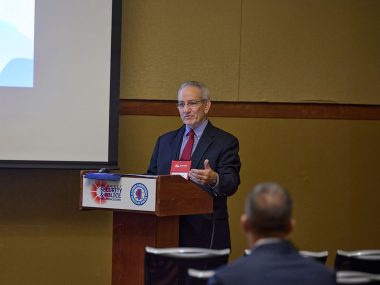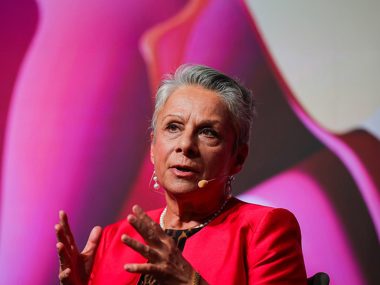As enterprises race to adopt artificial intelligence, Manoj Mohan has spent much of his career exploring how organizations themselves need to evolve to keep up. Drawing on experience at Intuit, Meta, Apple, and Cloudera, he has helped teams modernize their data and AI platforms and rethink how they work around them. His core message is straightforward: AI does not just change what companies build; it reshapes how they think, decide, and collaborate.
Mohan shares his 3B Framework: Build It, Blend It, Blueprint It, as a practical guide for leaders re-architecting their enterprises for the AI era.
The Harsh Reality: Traditional Org Charts Don’t Survive the AI Era
“AI is exposing structural debt,” Mohan says. He points to a 2025 industry survey showing that while 72% of large companies now run AI pilots, fewer than 8% have redesigned their decision-making or organizational models around them. The consequence, he argues, is a proliferation of AI islands, shadow projects, and competing agendas, symptoms of enterprises still running on pre-AI DNA. Executives often mistake AI as a bolt-on capability. “You can’t bolt AI onto a traditional org chart and expect exponential results,” he notes. “You have to rebuild the enterprise to think like an AI system, iterative, data-driven, and collaborative by design.”
The Enterprise AI Blind Spot
Despite surging budgets, many organizations remain trapped in outdated paradigms. Functional silos keep data, modeling, and product functions apart. Governance and compliance arrive late, triggering rework and delays. And project-based thinking treats AI as a milestone rather than a learning loop. “They spin up AI Centers of Excellence or GenAI task forces,” Mohan observes, “but they miss the real transformation, helping every engineer, PM, and designer start thinking like an AI builder.”
The 3B Framework: Build It. Blend It. Blueprint It.
To thrive in this new landscape, enterprises must redesign not only the tech stack but also the org stack. Mohan’s 3B Framework offers a blueprint for that reinvention.
Build It focuses on cross-functional AI pods rather than isolated teams. These small, autonomous squads own the full loop, from data ingestion to model deployment and feedback, and consistently achieve faster experiment cycles, fewer failures moving to production, and quicker release velocity. “AI moves at the speed of iteration, not approval,” Mohan explains. “Think autonomous teams, not assembly lines.”
Blend It embeds human-machine collaboration into everyday workflows. Mohan calls this “augmented flow”: decision loops pair human judgment with machine scale; engineers deepen product intuition while PMs gain data fluency; and AI capabilities are delivered through reusable APIs. Whether it’s “man-in-the-loop orchestration” or “two-way enablement,” the principle is the same, AI elevates people when it’s embedded, not appended.
Blueprint It institutionalizes the leadership and cultural shifts that sustain change. Technology is the easy part; culture is existential. Leaders move from hierarchy to hypothesis by privileging experimentation over edict, from reporting to reinforcement by rewarding learning velocity over perfection, and from control to context by empowering teams with clear missions and guardrails. One Fortune 500 company that adopted this approach tripled experimentation speed and quadrupled internal AI tool adoption in a single year.
The Talent Stack Behind AI Scalability
If AI transforms products and processes, it also transforms people. “Most org charts show who reports to whom,” Mohan says. “The AI-native enterprise defines how intelligence reports back.” He highlights emerging roles that form the backbone of scalable AI: Data Reliability Engineers who ensure accuracy, lineage, and compliance; Retrieval/Context Engineers who make models context-aware via optimized RAG and search; AI Product Engineers who merge data, ML, and UX to deliver copilots and explainable experiences; EvaluationOps Engineers who manage evaluation, drift, and bias; and AI UX Writers who humanize interactions with transparent, clear language. “Stop hiring for yesterday’s job descriptions,” he cautions. “Start hiring for tomorrow’s failure points.”
What the Top 5% Do Differently
Leaders build AI platforms, not AI projects. Privacy, observability, and monitoring are built in from the start. An AI mindset reaches every role, so reviews routinely ask how AI can make a capability ten times better. Organizations re-form teams around model outcomes each quarter, and boards track AI metrics alongside P&L and NPS. The payoff appears quickly: higher iteration velocity, lower operating costs, and measurable trust within twelve months.
The Leadership Playbook
For Mohan, AI strategy and organizational design are inseparable. “Your org structure is your AI strategy,” he emphasizes. “If your reporting lines reward predictability over experimentation, your AI initiative will die quietly.” The path forward embeds AI pods where value is created, redefines roles around data and decision quality, builds a culture stack that prizes curiosity and governance, and institutionalizes responsible AI before scale exposes risk. “AI doesn’t just make products smarter; it makes companies more adaptive, if you let it.” Traditional organizations were built for predictability. AI demands adaptability. “The question for every CXO,” Mohan concludes, “is no longer ‘Do we have an AI strategy?’ but ‘Do we have a structure and culture that compound intelligence?’ Because only those who Build It, Blend It, and Blueprint It will thrive.”
As enterprises cross the chasm from AI experimentation to AI governance, Mohan believes the winnners will be those who treat intelligence as a system to be engineered, not just a capability to be deployed.
Connect with Manoj Mohan on LinkedIn to explore how to architect an AI-native culture and redesign org structures for exponential learning.







